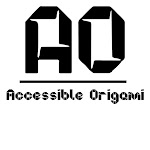Text-Only Instructions copyright 2025 by Lindy van der Merwe
accessorigami.com
Credits and Resources:
This is likely to be a traditional model.
Paper to be used: Rectangular, any size; A4, copy paper, note paper, magazine pages or pamphlets will make a nice envelope.
Folding level: Easy/Beginner
Steps: 9
Description: This is a tall, rectangular envelope with a smooth front surface and at the back, a triangular flap that tucks into a folded pocket.
Remarks:
This envelope can be used in scrap books, on top of gifts, for enclosing cards, notes, money, any small, flat object.
The model is quite secure as long as you do not fill it with things that are heavy or bulky.
These envelopes can also be used for advent calenders. Secure with a sticker or a dab of glue after they have been filled.
Alternatively, a piece of paper can simply be folded into this model and decorated for a quick children's project or a personal touch.
If using two-sided paper, lay your paper with the patterned or colored side down before starting to fold.
Step 1
Place your rectangular paper down in portrait orientation, or with the long sides on the left and right.
Step 2
Fold the left edge over to meet the right edge. Crease and unfold.
Step 3
Fold the left edge over to meet the center. Crease.
Crease the left side and leave folded.
Step 4
Do the same from the right, so the two long edges meet each other.
Crease the right side and leave folded.
Result: You have something looking like a tall cupboard with its doors closed.
Step 5
Take the top left corner of the rectangle and fold it down and inwards until it meets the center crease.
This is a diagonal fold, as if you want to fold a paper plane.
Leave folded.
Step 6
Repeat this fold with the top right corner so your rectangle now has a pointy end.
Step 7
Now, focus on the bottom edge of the rectangle, nearest you. Fold it straight up so it just meets the edge formed by the two triangles at the top.
Make a nice crease through all the layers of the paper along the bottom edge of the envelope.
Step 8
Finally, take the top pointy end and bring it towards you so it folds over the body of the envelope.
Make a strong crease along the top edge of the model.
Step 9
You can now either tuck the point into the body of the envelope itself, or if you like the look of the flap on the outside and you want to seal the envelope, use a nice sticker or a dot of glue.
If you turn the envelope so the smooth front is facing you, note that it has two loose flaps on the inside. The pocket you will use to place something inside and to tuck in the point of the envelope will now be at the back.
If preferred, you can add a dab of glue to secure the two loose inside flaps to the front of the envelope, which will secure the sides to stay together, but this is not strictly necessary. It will hold its shape and stay closed as long as the contents is not too heavy or bulky.
This is only a very simple envelope for a beginner. It is, perhaps, not as secure as other envelopes, but it has partly been chosen for the fact that it is easy to remember and fairly intuitive to fold.
If you feel this envelope is too easy or not secure enough, feel free to check out many more envelopes and letterfolds by visiting accessorigami.com
If you enter on the Category Button on the main page you can find all the Envelopes and Letterfolds and many other categories.
Making origami accessible through text-only instructions.
For non-commercial use only.
Compiled by Lindy van der Merwe, April 2025
This text copyright 2025 by accessorigami.com

Comments
Post a Comment